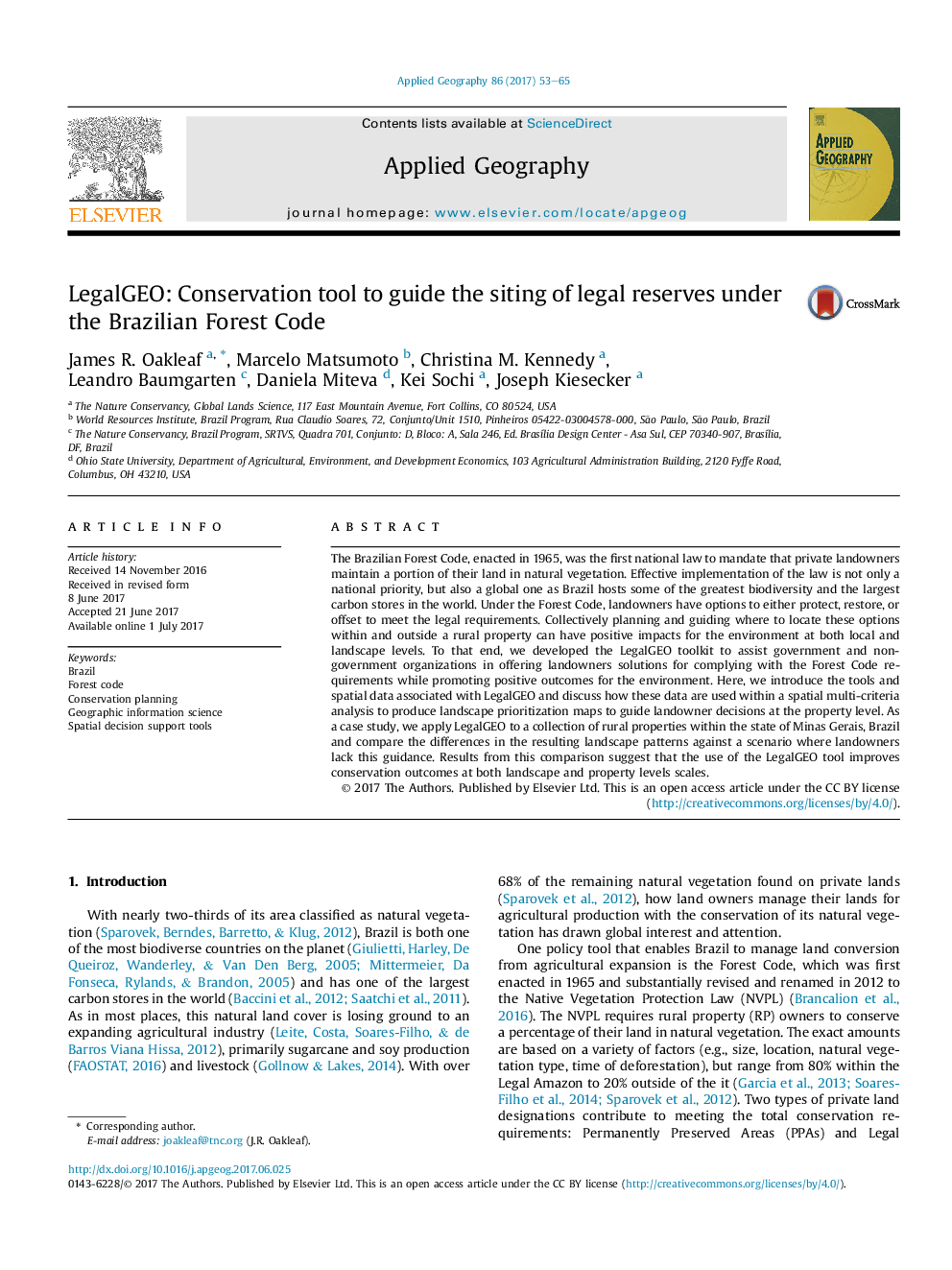| Article ID | Journal | Published Year | Pages | File Type |
|---|---|---|---|---|
| 6458318 | Applied Geography | 2017 | 13 Pages |
â¢Description of spatial decision tool (i.e. LegalGEO) created to facilitate implementation of the Brazil Forest Code.â¢Increasing Forest Code conservation outcomes using simple GIS and ecological models connected with LegalGEO.â¢Case study illustrating the use of LegalGEO.
The Brazilian Forest Code, enacted in 1965, was the first national law to mandate that private landowners maintain a portion of their land in natural vegetation. Effective implementation of the law is not only a national priority, but also a global one as Brazil hosts some of the greatest biodiversity and the largest carbon stores in the world. Under the Forest Code, landowners have options to either protect, restore, or offset to meet the legal requirements. Collectively planning and guiding where to locate these options within and outside a rural property can have positive impacts for the environment at both local and landscape levels. To that end, we developed the LegalGEO toolkit to assist government and non-government organizations in offering landowners solutions for complying with the Forest Code requirements while promoting positive outcomes for the environment. Here, we introduce the tools and spatial data associated with LegalGEO and discuss how these data are used within a spatial multi-criteria analysis to produce landscape prioritization maps to guide landowner decisions at the property level. As a case study, we apply LegalGEO to a collection of rural properties within the state of Minas Gerais, Brazil and compare the differences in the resulting landscape patterns against a scenario where landowners lack this guidance. Results from this comparison suggest that the use of the LegalGEO tool improves conservation outcomes at both landscape and property levels scales.
